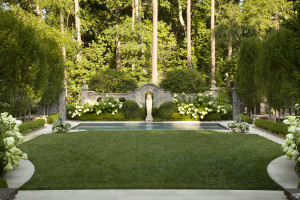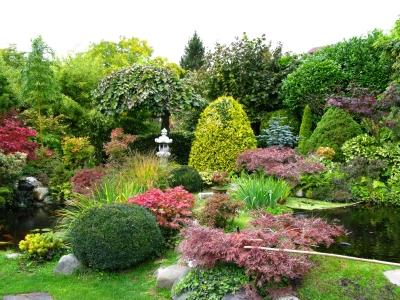3 Essential Elements of an Appealing Landscape
Considering selling your house? There are many things you can do to your home to increase its value, from updating outdated wallpaper to replacing rotting porches. One often overlooked area, however, is your landscape design. In the first of a three-part series on using landscaping to increase your property value, we explore how you can design a landscape for your home that has stellar curb appeal and leaves a lasting impression.
According to recent research from Virgina Tech, well-landscaped homes can have anywhere from 5.5% to 12.5% higher property values than those with no landscaping. For example, on a $300,000 home, this translates to anywhere from a $16,500 to $38,000 value increase. Not too shabby!
The first step to creating a well-landscaped property is designing the big picture. Should there be trees? Where? What kind of bushes would look the best? What about flowers? A sophisticated landscape design is hard to define, but people definitely know it when they see it.
3 Things to Consider . . .

A well-designed landscape takes three important factors into consideration: balance, seasonality, and diversity.
In landscape design, there is “symmetrical balance” and “asymmetrical balance“. Symmetrical balance essentially means making each side of your landscaped area mirror the other side. Think formal English gardens. Asymmetrical balance is a little harder to achieve, but can create a very appealing and less formal atmosphere. It requires balancing big things with multiple small things, creating something that feels appealing even though it doesn’t follow any strict rules. To achieve it, consider adding a taller tree or shrub to flower beds filled with low plantings. Don’t be afraid to juxtapose a row of thick hedges with a lattice crawling with delicate morning glories. A tree on one side of your property doesn’t have to be mirrored by a tree on the other side, but could be balanced by a clump of bushes, tall sunflowers, or an arbor.
Seasonality is also important to consider. A yard bursting with color in the summertime is great, but will lose its luster come fall. Depending on what climate you live in, the guidelines for what plantings to use will differ. When choosing plants, consider a balance of those that flower early in the spring, (such as daffodils, phlox, and plum or cherry trees), during the summer, and those that keep their color and livelihood long into the fall (asters, shasta daisies, and late blooming daylilies). There are even ways to keep some color into the winter, with species such as winter creeper and blue oat grass. Do some research into what species flourish in each season in your climate zone.
Finally, keep plant diversity in mind when choosing plant species. A garden with a mixture of many colors, textures, heights, and shapes is more appealing than a garden with only one or two species. Also consider whether your choices are annuals or perennials. Perennial flowers will regrow and flower every season on their own, while annuals will finish their life cycle in one year and need to be re-planted each year.
Planning on starting a new garden or landscaped area? Learn how to clear overgrown land for new plantings. Looking for more tips for increasing your property value with landscaping? See Part II and Part III of the series!
